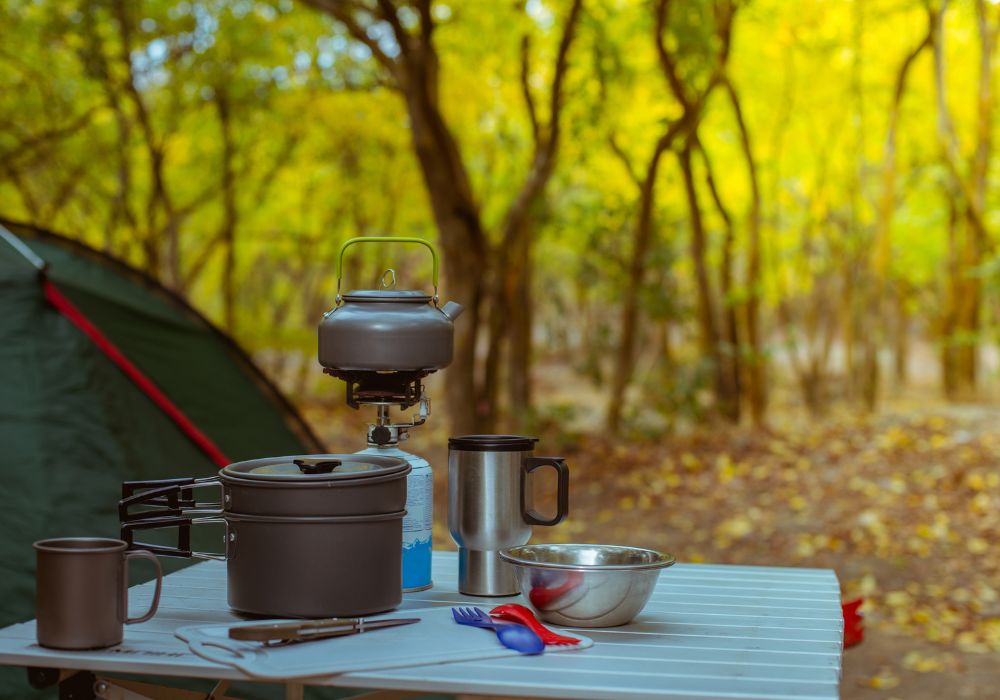Choosing a Durable Camping Cookware Set

An ideal camping cookware set consists of pots that can accommodate the size of your group, each equipped with its own lid, as well as insulated mugs with lids. Some sets also include extra features, like trivets or even a camp sink.
Each type of cooking cookware offers unique advantages and disadvantages in terms of cost, weight, heat distribution and durability. Make an informed choice.
Aluminum
Aluminum cookware is lightweight and affordable – ideal for simmering food without scorching it. Plus, its fast heating-cooling cycles mean it heats quickly while cooling quickly after use; plus its durability means it can withstand backcountry abuse!
Unfortunately, aluminum reacts negatively with acidic foods and can leave a metallic flavor in your dishes, and does not work with induction cooktops. Furthermore, aluminum dent and scratches easily – though hard-anodized aluminum has proven more resistant.
If you’re car camping and cooking on a propane camp stove, an aluminum pot set like the GSI Bugaboo Base Camper Cookset may be just what’s needed to feed an entire family while still taking up minimal storage space. Though not suitable for backpacking trips, it will prove invaluable on shorter excursions.
Silicone
No matter whether you’re cooking meals in your tent or camping out in the backcountry, some form of camp cookware will be necessary. Which type you select depends on what types of outdoor excursions you undertake and the number of mouths need feeding!
For backpacking, look for a lightweight yet durable cooking set weighing no more than 5lbs. A high-quality camping cookware set should feature short pots with rounded corners to balance well on backpacking stoves; tight fitting lids should ensure faster boiling times while keeping ash out of food; as well as comfortable, easy-grip handles nestle together for compact storage in backpack or gear bag. Add lightweight cutting boards, spatulas and ultralight utensils as essential components of a camp kitchen: these tools allow food transfers between pan to plates as well as scooping out any final bits left at the bottom of dehydrated meal pouches.
Teflon or Ceramic Coatings
Nonstick ceramic cookware is touted as the latest and greatest in camp kitchen gear, yet in most instances it simply a nonstick pan without Teflon (and thus without all those chemicals). While nonstick ceramic pans may be healthier options than Teflon-based pans that release chemicals into food, they still utilize man-made materials and will eventually wear down just like any nonstick cookware product.
Ceramic-coated pans typically use metal bases and should not be exposed to extremely hot cooking environments, as overheating may release toxic fumes or damage the coating, while hard, sharp objects will scratch its surface.
Stainless steel cookware is durable and heats evenly, yet heavy and susceptible to hotspots during use. For adventurers who tend to abuse their gear in the backcountry, anodized aluminum may be more cost-effective; however, lightweight options like GSI’s Bugaboo Base Camp Cookset 4 offer lightweight durability without breaking the bank.
